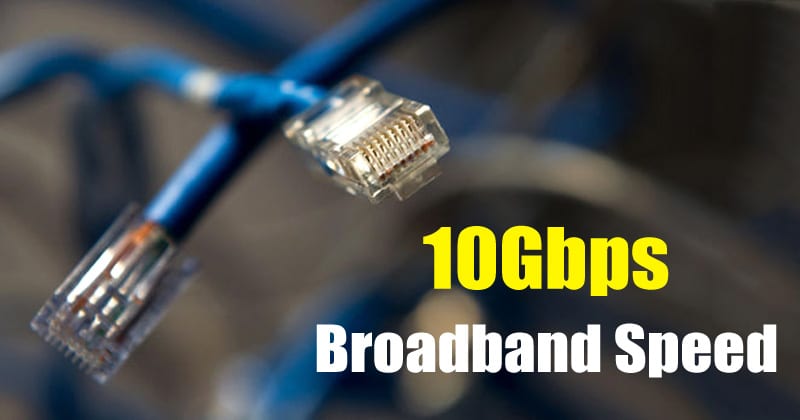Recently, researchers have developed a new hardware that can consistently provide high-speed broadband connectivity. Let me tell you, the new technology developed by researchers can enable dedicated data rates at more than 10Gbps for a super-fast, low-cost broadband connection.
This New Technology Will Give You 10Gbps Broadband Speed At Home
Who doesn’t want high-speed internet at home or office? Well, everyone wants it. Recently, researchers have developed a new hardware that can consistently provide high-speed broadband connectivity.
Let me tell you, the new technology developed by researchers can enable dedicated data rates at more than 10Gbps for a super-fast, low-cost broadband connection.
Researcher Sezer Erkilinc, from University College London in the UK said “By 2025, average speeds over 100 times faster will be required to meet increased demands for bandwidth-hungry applications such as ultra-high definition video, online gaming, and the Internet of Things,”
“The future growth in the number of mobile devices, coupled with the promise of 5G to enable new services via smart devices, means we are likely to experience bandwidth restrictions; our new optical receiver technology will help combat this problem”
Researchers have actually developed a simplified receiver to be used in optical access networks. These networks are actually the links that connected internet users to their service providers.
Polina Bayvel, from UCL, said “To maximise the capacity of optical fibre links, data is transmitted using different wavelengths, or colors, of light. Ideally, we’d dedicate a wavelength to each subscriber to avoid the bandwidth sharing among the users,”
Well, the new receiver shares many advantages of coherent receivers. However, this new tech is much simple, cheap and smaller and just requires 25% of the detectors used in conventional receivers.
Researchers from the University of Cambridge in the UK have achieved this simplification by adopting a coding technique to fibre access networks that are designed to prevent signal fading in wireless communications.
So, what do you think about this? Share your views in the comment box below.



